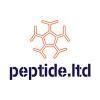
Lostfalco's Extensive Nootropic Experiments [Curated]
#1411
Posted 01 November 2013 - 04:49 PM
#1412
Posted 01 November 2013 - 04:56 PM
#1413
Posted 01 November 2013 - 05:12 PM
Ascendant do you have a list of all known mitochondria/atp boosters. PQQ+CoQ10+ALA+Resveratrol+Equol+BCAAs+exercise is this it? I'm very interested in doing some experiments in places other than my brain.
I should also mention that atp itself seems to be a booster of atp.
http://www.ncbi.nlm....pubmed/22795271
http://www.ergo-log....tp-combo.html#1
I think we should add supplemental atp to our mitochondrial list. Also from a pure anecdotal viewpoint shilijat looks promising.
There are in fact a lot of substances and 'techniques' to induce mitochondrial biogenesis; I would have a look at the post I made on the TULIP Stacking thread. I have to go back and research all of those compounds, maybe print out some studies and the Examin.com pages on them. Many of them have potential synergy. I agree in adding supplemental ATP to the list, there is a study (I'll have to go back and find it) where people who took it prior to resistance training performed much better and recovered much better, and Prof. Andro (Suppversity) believes it would have great synergy with creatine; I remember reading a paper on Biophysical approaches to altered consciousness and it was mentioned that creatine would be the next best thing to supplemental ATP but they should work together very well.
Working out in a glycogen depleted state induces mitochondrial biogenesis:
- Psilander N, Frank P, Flockhart M, Sahlin K. Exercise with low glycogen increases PGC-1agene expression in human skeletal muscle. Eur J Appl Physiol. 02 Oct 2012 [ahead of print]
- Gibala MJ, McGee SL, Garnham AP, Howlett KF, Snow RJ, Hargreaves M. Brief intense interval exercise activates AMPK and p38 MAPK signaling and increases the expression of PGC-1alpha in human skeletal muscle. J Appl Physiol. 2009 Mar;106(3):929-34.
- http://jap.physiolog...tent/111/5/1335 (Resistance Exercise Enhances the Molecular Signalling of Mitochondrial Biogenesis Induced by Endurance Exercise in Human Skeletal Muscle)
- I found this highly interesting: http://www.ncbi.nlm....pubmed/22627788
Three weeks of erythropoietin treatment hampers skeletal muscle mitochondrial biogenesis in rats. (can anyone get the full study?)
#1414
Posted 01 November 2013 - 05:55 PM
- I found this highly interesting: http://www.ncbi.nlm....pubmed/22627788
Three weeks of erythropoietin treatment hampers skeletal muscle mitochondrial biogenesis in rats. (can anyone get the full study?)
Now that's interesting. Since altitude/low oxygen training raises levels of erythropoietin, it may be the opposite of synergistic with any kind of mito biogenesis protocol.
#1415
Posted 01 November 2013 - 06:22 PM
Ascendant do you have a list of all known mitochondria/atp boosters. PQQ+CoQ10+ALA+Resveratrol+Equol+BCAAs+exercise is this it? I'm very interested in doing some experiments in places other than my brain.
I should also mention that atp itself seems to be a booster of atp.
http://www.ncbi.nlm....pubmed/22795271
http://www.ergo-log....tp-combo.html#1
I think we should add supplemental atp to our mitochondrial list. Also from a pure anecdotal viewpoint shilijat looks promising.
I am aware of these so far:
- ATP
- PQQ
- CoQ10+ALA
- Resveratrol
- BCAAs
- Both endurance and weight-training exercise
- Working out in a glycogen-depleted state (as BigPapaChakra pointed out)
- Cold thermogenesis
You know, I feel like we should have a wiki for all this information. If people are willing to contribute to a wiki on human enhancement, I would be glad to create one.
Edited by AscendantMind, 01 November 2013 - 06:22 PM.
#1416
Posted 01 November 2013 - 06:28 PM
#1417
Posted 01 November 2013 - 06:30 PM
#1418
Posted 02 November 2013 - 04:18 AM
http://www.kurzweila...ivate-the-brain
"Furthermore, light stimulates higher cognitive brain activity, independently of vision, and engages supplemental brain areas to perform an ongoing cognitive process. To our knowledge, our results constitute the first indication that ipRGC signaling may rapidly affect fundamental cerebral organization, so that it could potentially participate to the regulation of numerous aspects of human brain function."
#1419
Posted 02 November 2013 - 04:28 AM
http://faculty.washi...l formatted.pdf
"We found that all wavelengths, ranging from ultraviolet, to visible, to mid-infrared, increase EZ size, but most effective were the IR wavelengths that are strongly absorbed by water."
"A question is whether EZ water can survive the stomach’s acid environment. At typical stomach pH of 4, we found that more than 60% of the EZ was retained (Park and Pollack, unpublished). Hence, the EZ should largely make its way through the stomach environment, and on to the tissues."
"Strongly dipolar EZ water should therefore hydrate cells faster and more extensively than bulk water, with weak dipoles. We already have some evidence that charge plays a role: water with charge and therefore higher dipole moment passes more readily through semi-permeable membranes than neutral water (Zhao et al., 2009)."
"We found that aspirin substantially increased EZ size. The increase was as much as 300%."
"Preliminary experiments carried with the free radical scavenger SOD (superoxide dismutase), which is found in every cell, has shown substantial EZ expansion."
"Our experiments have shown that supplying negative charge greatly promotes EZ growth (Ovchinnikova and Pollack, 2009)."
"Cellular action occurs through the collective action of protein and water: as proteins fold, the interfacial water becomes transiently disordered, while subsequent unfolding brings reordering. If EZ water is central for folding, then long-term maintenance of EZ water must be
critical for proper folding and function. Hence, any protein/EZ unit compromised by dysfunction or pathology requires EZ restoration to become functional."
"It is known that without water, most macromolecules would collapse and precipitate; they could not function properly. This scientific premise underlies our hypothesis.
Many diseases have been recognized as dysfunctions of proteins or protein regulatory systems (Dobson, 2002; Wiggins et al., 2009). In this protein-centered framework, creating the dysfunction may involve two components: the protein, or the intimate EZ water that envelops the protein. Thus, a dysfunctional mitotic apparatus that endlessly drives cell division (cancer) may involve dysfunction not only in microtubules and motor proteins, but also of the surrounding EZ water. The state of interfacial water can be part of the problem — one that has received much less attention than the protein."
Edited by lostfalco, 02 November 2013 - 05:12 AM.
#1420
Posted 02 November 2013 - 09:24 PM
Ascendant do you have a list of all known mitochondria/atp boosters. PQQ+CoQ10+ALA+Resveratrol+Equol+BCAAs+exercise is this it? I'm very interested in doing some experiments in places other than my brain.
I should also mention that atp itself seems to be a booster of atp.
http://www.ncbi.nlm....pubmed/22795271
http://www.ergo-log....tp-combo.html#1
I think we should add supplemental atp to our mitochondrial list. Also from a pure anecdotal viewpoint shilijat looks promising.
I am aware of these so far:You know, I feel like we should have a wiki for all this information. If people are willing to contribute to a wiki on human enhancement, I would be glad to create one.
- ATP
- PQQ
- CoQ10+ALA
- Resveratrol
- BCAAs
- Both endurance and weight-training exercise
- Working out in a glycogen-depleted state (as BigPapaChakra pointed out)
- Cold thermogenesis
I think ALCAR was mentioned a few times as well, a quick look at examine.com
http://examine.com/s...ts/L-Carnitine/
seems to somewhat comfirm this. Also, while ALA was mentioned, R-ALA would probably be even more potent?
Not to forget Shilajit, D-Ribose and Dextrose/Glucose as well as Creatine.
#1421
Posted 03 November 2013 - 03:30 PM
Count me in.
Cool. I'll get to work on it. Lostfalco, I hope you'll contribute as well!
1. What are the downsides of having more mitochondria? That is, why wouldn't we have had them in the first place via evolution? Is a greater requirement for energy & nutrients the only reason (though admittedly it is a serious one), or might there be others more sinister?
So I asked this question of Aubrey de Grey on Quora (link), and this was his response:
There are indeed abundant such dangers. It has been known since the 1970s that mitochondria generate more free radicals when they have a high proton gradient, which happens when they are "underemployed" - when there is lots of carbohydrate or fat around to supply energy and the relevant metabolic intermediates are thus being supplied to the respiratory chain, but when not so much ATP is being used. That's the main reason why Ames and Hagen used lipoic acid: it itself does not increase mitochondrial activity, but it neutralises the free radical elevation caused by the thing that does, namely the other component of their formula, acetyl-L-carnitine.
This is a very complex area of biochemistry, as it turns out, with counterintuitive behaviour in many respects. But the bottom line is that the cell already knows pretty well how to judge how many mitochondria would be too few or too many, so it's hard to see why we should mess with it.
Any thoughts on this? Perhaps we should be careful to use more antioxidants (though I know PQQ is one) with whatever mitochondrial biogenesis protocols we employ. But perhaps they will not be enough.
If only there was a way we could measure free radical damage on our own...
Edited by AscendantMind, 03 November 2013 - 03:32 PM.
#1422
Posted 03 November 2013 - 03:44 PM
http://www.scribd.co...Engines-of-Life
#1423
Posted 03 November 2013 - 03:57 PM
PQQ/PGC-1a improve not just mitochondrial number but quality of existing mitochondria. It remodels mitochondria (according to the admittedly limited research) and actually limits free radical damage.Any thoughts on this? Perhaps we should be careful to use more antioxidants (though I know PQQ is one) with whatever mitochondrial biogenesis protocols we employ. But perhaps they will not be enough.
If only there was a way we could measure free radical damage on our own...
"PGC1α is a transcriptional coactivator that is a central inducer of mitochondrial biogenesis in cells. Recent work highlighted that PGC1α can also modulate the composition and functions of individual mitochondria. Therefore, it is emerging that PGC1α is controlling global oxidative metabolism by performing two types of remodelling: (1) cellular remodelling through mitochondrial biogenesis, and (2) organelle remodelling through alteration in the intrinsic properties of mitochondria." http://jcs.biologist...25/21/4963.long
Wiki quotes
"Most significantly, the study demonstrated that PQQ not only protects mitochondria from oxidative stress—it promotes the spontaneous generation of new mitochondria within aging cells, a process known as mitochondrial biogenesis.[8] The implications of this discovery for human health and longevity are significant because the only other known methods proven to stimulate mitochondiral biogenesis in aging humans are intense aerobic exercise,[9] strict caloric restriction,[10] and certain medications such as thiazolidinediones[11] and the diabetes drug metformin.[12]"
"The team of researchers at the University of California analyzed PQQ’s influence over cell signaling pathways involved in the generation of new mitochondria and found that there are three signaling molecules activated by PQQ that cause cells to undergo spontaneous mitochondrial biogenesis:[8]
- PQQ activates expression of PCG-1α (peroxisome proliferator-activated receptor gamma coactivator 1-alpha), a “master regulator” that mobilizes cells’ response to various external triggers. It directly stimulates genes that promote mitochondrial and cellular respiration, growth, and proliferation. Its capacity to upregulate cellular metabolism at the genetic level favorably affects blood pressure, cholesterol and triglyceride breakdown, and the onset of obesity.[13]
- PQQ triggers the CREB signaling protein (cAMP-response element-binding protein), which plays a pivotal role in embryonic development and growth. It also beneficially interacts withhistones, proteins involved in the packaging and nuclear organization of cell DNA.[14] CREB also stimulates the growth of new mitochondria.
- PQQ regulates a recently discovered cell signaling protein called DJ-1. As with PCG-1α and CREB, DJ-1 is involved in cell function and survival, has been shown to prevent cell death by combating intensive oxidative stress,[15][16] and is likely important to brain health and function. DJ-1 mutations have been conclusively linked to the onset of rare inherited forms of Parkinson’s disease and other neurological disorders.[citation needed]"
VERY good article on PGC1a as a major regulator of energy production in the body. The best part is this: PGC1a upregulates energy production AND energy cleanup...AND it upregulates cleanup more than production! Therefore, you get more production AND less damage simultaneously. That's pretty effin' cool.
http://jcs.biologist...25/21/4963.long
"Overall, the studies on the effect of PGC1α on oxidative metabolism reveal that it increases mitochondrial biogenesis in parallel to elevating the cellular ROS-detoxifying capacity, such that cells can benefit from increased respiration and ATP production without suffering from oxidative damage. For these reasons, PGC1α has been suggested to coordinate a ‘clean energy programme’ (Finkel, 2006), in which the generation of mitochondrial high energy metabolites (ATP) and removal of toxic derivatives (ROS) are coordinately regulated."
Edited by lostfalco, 03 November 2013 - 04:55 PM.
#1424
Posted 03 November 2013 - 05:01 PM
It talks about mitochondrial remodeling and mitochondrial biogensis.
http://jcs.biologist...25/21/4963.long
"The elevated oxidative metabolism associated with increased PGC1α activity could be accompanied by an increase in reactive oxygen species (ROS) that are primarily generated by mitochondria. However, increasing evidence suggests that this is not the case, as PGC1α is also a powerful regulator of ROS removal by increasing the expression of numerous ROS-detoxifying enzymes."
"Therefore, PGC1α, by controlling both the induction of mitochondrial metabolism and the removal of its ROS by-products, would elevate oxidative metabolism and minimize the impact of ROS on cell physiology."
"Therefore, it appears that PGC1α both increases mitochondrial functions and minimizes the buildup of its by-products, ensuring a global positive impact on oxidative metabolism."
"We will highlight recent developments indicating that PGC1α has a profound impact on the intrinsic properties and functions of individual mitochondria, in addition to stimulating mitochondrial biogenesis. This mitochondrial remodelling might have important physiological consequences because it could be an effective way to fine-tune mitochondrial metabolism."
Edited by lostfalco, 03 November 2013 - 05:19 PM.
#1425
Posted 03 November 2013 - 05:35 PM
Entire book online for free: Cells, Gels, and the Engines of Life by Dr. Gerald Pollack
http://www.scribd.co...Engines-of-Life
Can also really recommend Pollack's "The Fourth Phase of Water", very fundamental aspects of biology seems to need complete reconsideration in the light of the findings outlined in that book - basically it has to do with H2O's interaction with the infrared light spectrum.. so, definitely contains information that might come in handy in relation to what people are up to in this thread
#1426
Posted 04 November 2013 - 01:02 AM
Very cool man. BigPapa introduced me to Pollack's work and you're right, it is extremely fundamental...in fact, it is in the running for MOST fundamental (if true). Do you mind sharing the habits that you've changed? Experiences so far?Entire book online for free: Cells, Gels, and the Engines of Life by Dr. Gerald Pollack
http://www.scribd.co...Engines-of-Life
Can also really recommend Pollack's "The Fourth Phase of Water", very fundamental aspects of biology seems to need complete reconsideration in the light of the findings outlined in that book - basically it has to do with H2O's interaction with the infrared light spectrum.. so, definitely contains information that might come in handy in relation to what people are up to in this threadI have only done cursory read of it thus far since the 'hard' aspects science-wise are still iffy for me - still it has changed a couple of habits of mine already.
#1427
Posted 04 November 2013 - 05:17 AM
http://www.ebay.com/...=item232c0ac99b
This study of TBI patients claims a power of 12-15mW per diode which would give us ~1.4W for 96 LEDs, an order of magnitude difference:
http://www.ncbi.nlm....les/PMC3104287/
Zawy mentioned something around 16mW per diode earlier in this thread. Assuming 15mW per diode, the 96 LED array puts out about 1.4W. I measured it to be around 11cm x 7.5cm which would give us 17mW/cm^2.
The energy delivered in the studies in this survey ranges from 1J-15,000J:
https://dl.dropboxus...nzalez-lima.pdf
At the low end, it would take around 60 seconds to deliver 1J/cm^2 with the 96 LED array.
Edited by hephaestus, 04 November 2013 - 05:33 AM.
#1428
Posted 04 November 2013 - 11:36 AM
Also theres seems to be corelation of IR light exposure and growth of the plants, so it seems that its benefical for all life forms containing water (probably all:)).
#1429
Posted 04 November 2013 - 12:24 PM
850 nm LED put out about 23 mW each running at 50 mA (1.55V x 0.03A x 30% eff = 0.023 W). Keep in mind most of the brain studies are referring to light delivered to the cortex, not the applied light. The accepted estimate (which I can roughly confirm with skin and skull absorption data is that 2% of the light makes it through. That gives:
96 LED * 0.023 W / (11x7.5 cm) * 0.02 transmission = 0.00054 W/cm^2
1 J = 1 W*sec
1 W*sec / 0.00054 / 60 sec/minute = 31 minutes
This assumes a bald head, or very light colored hair and white skin.
Edited by zawy, 04 November 2013 - 12:24 PM.
#1430
Posted 04 November 2013 - 03:08 PM
So I asked this question of Aubrey de Grey on Quora (link), and this was his response:
There are indeed abundant such dangers. It has been known since the 1970s that mitochondria generate more free radicals when they have a high proton gradient, which happens when they are "underemployed" - when there is lots of carbohydrate or fat around to supply energy and the relevant metabolic intermediates are thus being supplied to the respiratory chain, but when not so much ATP is being used. That's the main reason why Ames and Hagen used lipoic acid: it itself does not increase mitochondrial activity, but it neutralises the free radical elevation caused by the thing that does, namely the other component of their formula, acetyl-L-carnitine.
This is a very complex area of biochemistry, as it turns out, with counterintuitive behaviour in many respects. But the bottom line is that the cell already knows pretty well how to judge how many mitochondria would be too few or too many, so it's hard to see why we should mess with it.
Any thoughts on this? [snip]
C60 in olive oil comes to mind. If it works as well as hoped, it will neutralize free radicals right in the mitochondria. I have been taking it for about a year now. I'm about to mix up a fresh batch as discussed in the C60oo Expiration Date thread (in small bottles, freezing all but the current one).
#1431
Posted 04 November 2013 - 07:20 PM
Yeah. The interaction of light and water would constitute 'a' moa for lllt but not necessarily 'the' mechanism. LLLT is already postulated to work by multiple mechanisms. Pollack's work presents a very novel moa that hasn't been sufficiently tested yet...but it should be!Pollack´s work on water is very very interesting, does it implies that the mechanism of action of lllt is due the fact that IR light interacts with water in the cells and change its structure?
Also theres seems to be corelation of IR light exposure and growth of the plants, so it seems that its benefical for all life forms containing water (probably all:)).
I've been shining halogen light (I bought a $10 halogen bulb and a $5 lamp from Target) on my drinking water (I've been calling it 'Laser Water' cause I'm a dork) for the past week for a minimum of 5 minutes. I haven't changed anything else (that I know of) in my life. My blood oxygenation level (as measured with a pulse oximeter) has gone up to 99% and my resting pulse rate has dropped to 50. I've measured these dozens of times over the past year and my resting pulse rate has always hovered around 60 (non-modafinil) and 70 (on modafinil) and my blood oxygenation has always been 98% (unless I'm using my oxygen concentrator). I've gotta go dig my blood pressure monitor out of storage and check to see if that has changed as well.
If anyone else tries it out...please report back. I'd love to see if it seems to work for you guys as well. =)
Edited by lostfalco, 04 November 2013 - 07:27 PM.
#1432
Posted 04 November 2013 - 07:28 PM
I've been shining halogen light (I bought a $10 halogen bulb and a $5 lamp from Target) on my water (I've been calling it 'Laser Water' cause I'm a dork) for the past week for a minimum of 5 minutes. I haven't changed anything else (that I know of) in my life. My blood oxygenation level (as measured with a pulse oximeter) has gone up to 99% and my resting pulse rate has dropped to 50. I've measured these dozens of times over the past year and my resting pulse rate has always hovered around 60 (non-modafinil) and 70 (on modafinil) and my blood oxygenation has always been 98% (unless I'm using my oxygen concentrator). I've gotta go dig my blood pressure monitor out of storage and check to see if that has changed as well.
If anyone else tries it out...please report back. I'd love to see if it seems to work for you guys as well. =)
Just to make sure I understood it right... you are shining your (bottle, glass, a container of) water with a halogen bulb for 5 mins minimum and than drink it?
Edited by rikelme, 04 November 2013 - 07:28 PM.
#1433
Posted 04 November 2013 - 07:50 PM
Yep. I put the water in a glass and make sure that the light shines directly on the surface from above. The more light it gets and the longer the time, the better. It should be noted that this is very speculative...but it intrigued me enough to try a cheap experiment. It is well established that water can absorb energy from light. The best wavelength seems to be 3 micrometers but I've had trouble finding that so I just decided to test out a halogen bulb.Just to make sure I understood it right... you are shining your (bottle, glass, a container of) water with a halogen bulb for 5 mins minimum and than drink it?
Main Study
http://www.ncbi.nlm....les/PMC2843558/
Interview with Pollack and article
http://articles.merc...zone-water.aspx
Best Short Summary of Pollack's work (as previously mentioned)
http://faculty.washi...l formatted.pdf
Pollack Lab
http://faculty.washington.edu/ghp/
Pollack's TED talk (again...sorry for the repost =))
http://youtu.be/i-T7tCMUDXU
Thanks again to BigPapa for introducing me to these ideas.
Edited by lostfalco, 04 November 2013 - 07:58 PM.
#1434
Posted 05 November 2013 - 03:56 AM
http://www.ncbi.nlm....les/PMC3104287/
Treatments were applied bilaterally and to midline sagittal areas using LED cluster heads [2.1″ diameter, 61 diodes (9
×
633
nm, 52
×
870
nm); 12–15
mW per diode; total power: 500
mW; 22.2
mW/cm^2; 13.3
J/cm^2 at scalp (estimated 0.4
J/cm^2 to cortex)].
http://www.ncbi.nlm....les/PMC2796659/
The treatment consisted of exposure to the light for 4 minutes (total delivered fluence per site of 60 J/cm^2) at each of 2 sites on the forehead that correspond to the 10-20 EEG sites, F3, and F4. Based on a penetration of 3.7% of the light to the dura, we calculated that 2.1 J/cm^2 was delivered to each of the treated areas of the brain.
http://online.lieber...9/pho.2012.3261
They received two 670 nm LED treatments (5 min, 50 mW/cm2, 15 J/cm2) per day for 72 h (chemical analysis) or 10 days (behavioral).
http://www.biomedcen...1471-2202/14/40
Following each injection, mice in the MPTP-NIr and Saline-NIr groups were treated to one cycle of NIr (670 nm) of 90 seconds from a light-emitting device (LED; Quantum Devices WARP 10). This treatment equated to ~0.5 Joule/cm2 to the brain
#1435
Posted 05 November 2013 - 09:23 PM
#1436
Posted 06 November 2013 - 02:05 AM
You're exactly right...it's WAY lower than the published studies. I think starting very low, testing personal response, and adjusting up or down to determine minimum effective dose is a decent strategy. Of course, I'm just a regular guy reading the research so definitely feel free to approach the subject however you like. =)Yeah it seems like 1-2 minutes is seriously underdosing compared to all of the LED studies listed in the survey paper:
Very cool Megatrone. I hope it works well for you!Received the 96 LED lamp yesterday and used it for the first time. I also started taking PQQ, and will report back in a few days.
Edited by lostfalco, 06 November 2013 - 02:06 AM.
#1437
Posted 06 November 2013 - 02:36 AM
When I press it against the skull in any location, in just 4-5 minutes, the area under it gets almost unbearably hot. I have to remove it, turn off power and blow on it to cool off before continuing use.
There is no way I could maintain it in the same spot for more than that, it would be too painful.
But it seems nobody else here experiences the same thing. Strange.
#1438
Posted 06 November 2013 - 02:50 AM
When I press it against the skull in any location, in just 4-5 minutes, the area under it gets almost unbearably hot. I have to remove it, turn off power and blow on it to cool off before continuing use.
Mine gets really hot too. I use it on my forehead, 5 mins per region, and have to unplug it and let it cool down before starting on the next spot. It is quite annoying how hot it gets, and it has left slight marks on my forehead before, and I can't use it on the rest of my head because it acts a bit like a heating iron and messes up my hair. It is quite damn annoying to use!
#1439
Posted 06 November 2013 - 03:53 AM
No problem. =) I actually felt more like I was extremely energized but unable to focus. I wouldn't describe it as particularly enjoyable. haThanks a lot Falco!
Would you agree with Hammeroff's subjective evaluation that it feels like 'having a Martini'? (I understand that in his world that is probably something positive, however, for me it is a particularly bad example as I really do not care for the taste of Martini, nor are the effects of alcohol particularly interesting, and also, if I was looking for an alcohol buzz, I'd just drink wine, beer or a Long Island Ice Tea instead...)
I would say there are better options for sure...depending on finances of course.I used this device 6 or 7 times. https://www.medexsup...oducts_id=23548What device did/do you use for ultrasonic brain stimulation?
The device itself, would you recommend it? Or are there better options out there?
#1440
Posted 06 November 2013 - 03:58 AM
Yeah, start with 30 seconds to 1 minute per location just to test your response. You can always go up from there if you need to. =) Look forward to hearing how it works for you!Ok thanks for confirming! Guess I'll order those devices and start with 1-2 minutes a day. Will report back.
Edited by lostfalco, 06 November 2013 - 03:59 AM.
Also tagged with one or more of these keywords: nootropic
1 user(s) are reading this topic
0 members, 1 guests, 0 anonymous users

























































